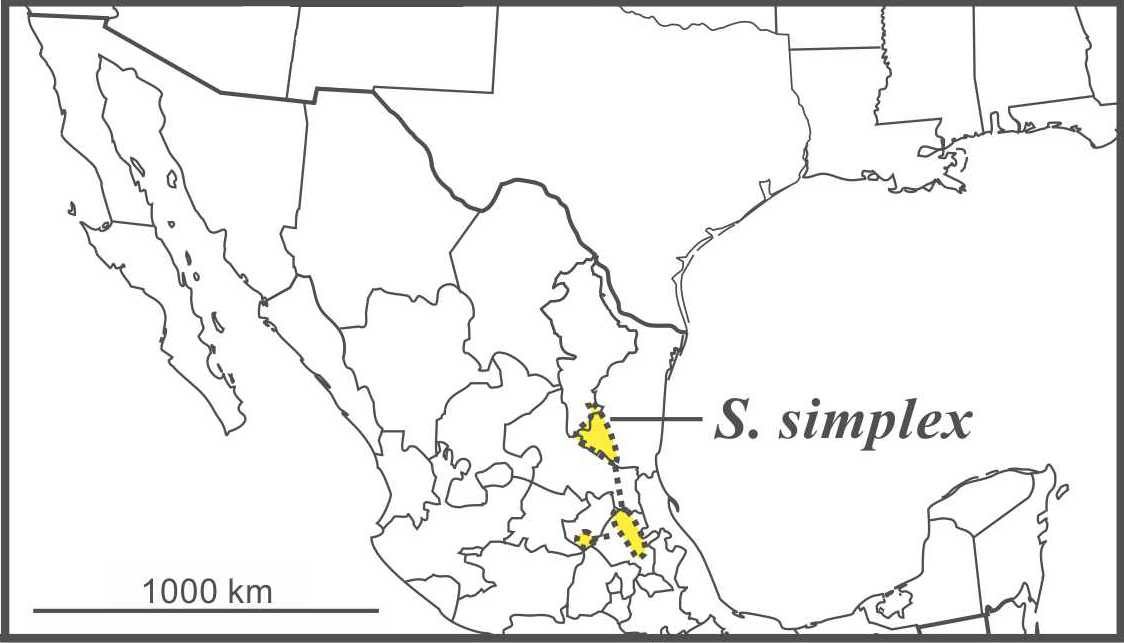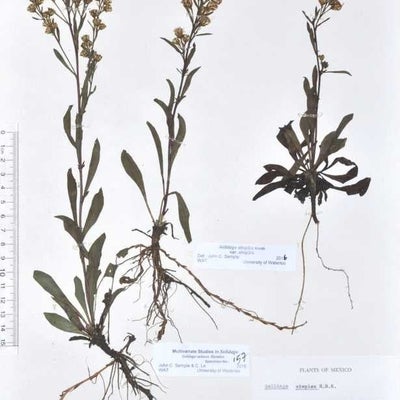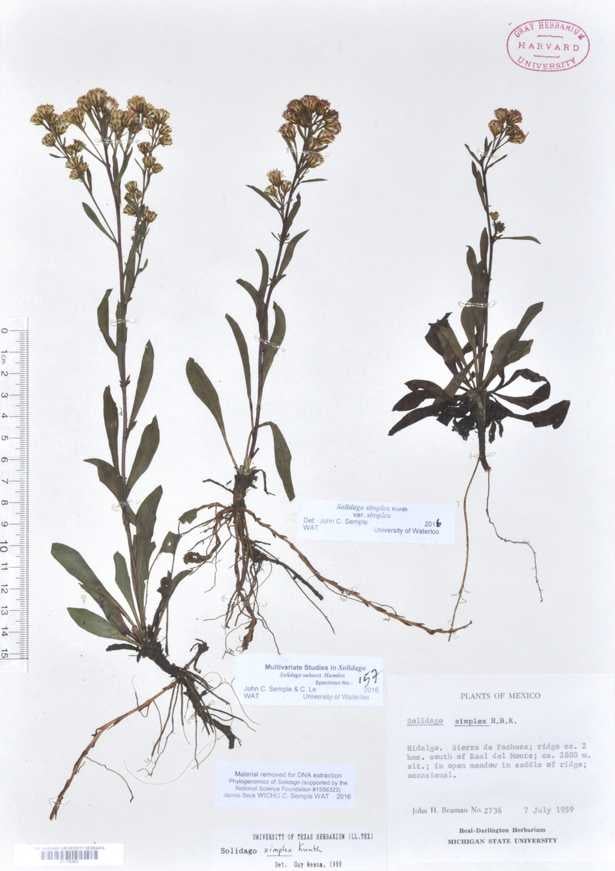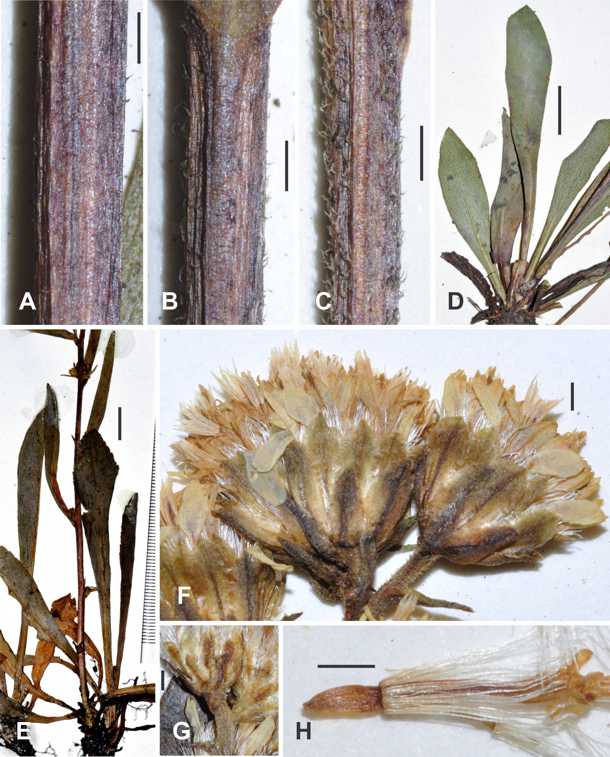Mexican Sticky Goldenrod
Solidago simplex Kunth in the narrow sense includes only plants of S. subsect. Humiles from the mountains of eastern Mexico from Nuevo Leon and Tamaulipas south to Queretaro and Hidalgo. Like other species in subsect. Humiles, upper portions of the plants are barely to copiously resinous and the phyllaries are obtuse to rounded. Lower stems are usually hairless but the upper stem and inflorescence can be sparsely to densely short villous (0.1-0.5 mm long hairs).

In the broad sense S. simplex has included S. glutinosa occurring in Canada and the U.S. In their revised sense Semple & Peirson (2013) excluded all the eastern species that had been treated as varieties. The species was included in S. spathulata DC. but that was nomenclaturally incorrect as the Kunth name is older than the de Candolle name. Cronquist (1947) included S. chlorolepis, S. gillmanii, S. racemosa, and S. randii under S. glutinosa as varieties in two subspecies. Ringius (1987) added an additional variety treated here as S. ontarioensis. Then, the entire infraspecific classification was transferred to S. simplex by Ringius in Ringius & Semple (1991) following Nesom's (1989) discovery that S. simplex was the oldest species name in the S. glutinosa complex. Peirson et al. (2012) presented arguments why each of the varieties should be treated as species and Semple & Peirson (2013) proposed a revised classification for the S. simplex complex. With the separation of S. simplex and S. glutinosa, there are no remaining transcontinental species in subsect. Humiles.
The cytogeography of S. subsect. Humiles and possible alternative classification schemes were discussed by Peirson, Reznicek and Semple (2012). Peirson et al (2013) discussed haplotype variation patterns in the subsection and possible ages for older taxa. No chromosome number has been reported for S. simplex from Mexico. All reported published under that name are for other species in subsect. Humiles.
Semple et al. (2019) presented a multivariate analysis of all 13 species of S. subsect. Humiles and compared S. glutinosa with S. simplex in an analysis that provided support for recognizing the two as separate species.
Last revised 19 May 2025 by J.C. Semple
© 2025 J.C. Semple, including all photographs unless otherwise indicated.
1-x. Solidago simplex. 1. Shoots, Beaman 2736 (GH), Hidalgo, Mexico. 2. Stems, rosette leaves, Heads, fruit, Semple (2016), Fig. 2.
Semple, J.C. , and J.A. Peirson. 2013. A revised nomenclature for the Solidago simplex complex (Asteraceae: Astereae). Phytoneuron 2013-41. 1-5.
Peirson, J.A., C.W. Dick and A.A. Reznicek. 2013. Phylogeography and polyploid evolution of North American goldenrods (Solidago subsect. Humiles, Asteraceae). J. Biogeography. 40: 1887–1898.
Semple, J.C., Y. Ma and L. Tong. 2016. On Solidago simplex (Asteraceae: Astereae): a multivariate study including S. glutinosa, S. leiocarpa, S. multiradiata and S. spathulata. Phytoneuron 2016-87. 1-21.
Semple, J.C., K. Kornobis, A. Mazzorato, G.S. Ringius, and J.A. Peirson. 2019. A multivariate morphometric analysis of Solidagosubsect. Humiles (Asteraceae: Astereae). Phytoneuron 2019-24: 1–61.



